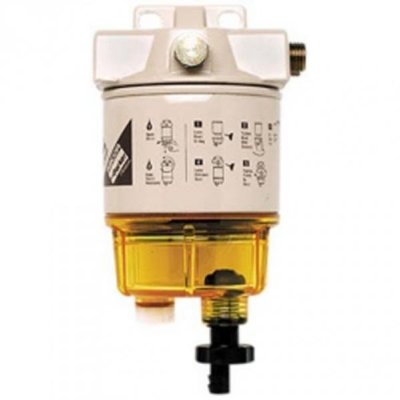Thanks, I'll check it out.
I did have a quick look at the Davco and Racor websites. Most on the former seemed large, and most I found on the latter seem to be more about fuel/water separating than simply filtering, but I'm hampered a bit by not knowing some stuff. As usual.

I know what I've got (sorta), so I know how big it is, how many ports, I know I need bleed screws... but have no clue about flow rate or filter density.
I can't find (or can't recognize) a minimum fuel flow rate for the Yanmar 3TNE74 engine. Nor anything about the OEM secondary fuel filter; element density, flow rate, all a mystery. Have specs up the gazoo, but not that, either in Kohler or Yanmar docs that I have available. It's only making 14-hp at 1800 RPMs, so can't be that much, I'd think...
The OEM filter assembly is probably about 4½"H x 3" diameter, not huge.
Would seem to me something that takes screw-in fittings -- instead of an apparently press-in input fitting -- would be better.
I've queried Kohler, but doubt I'll get anything other than a vanilla answer.
Racor has a nifty selection tool that's almost unusable for somebody like me: Let's configure your filter! OK, what series do you want?
Huh? How the hell do I know?
That might work a little better if I had those pesky factoids, but for first guesses... not so much. (It's a bit discouraging to know I'm not even a competent shopper.)
-Chris


